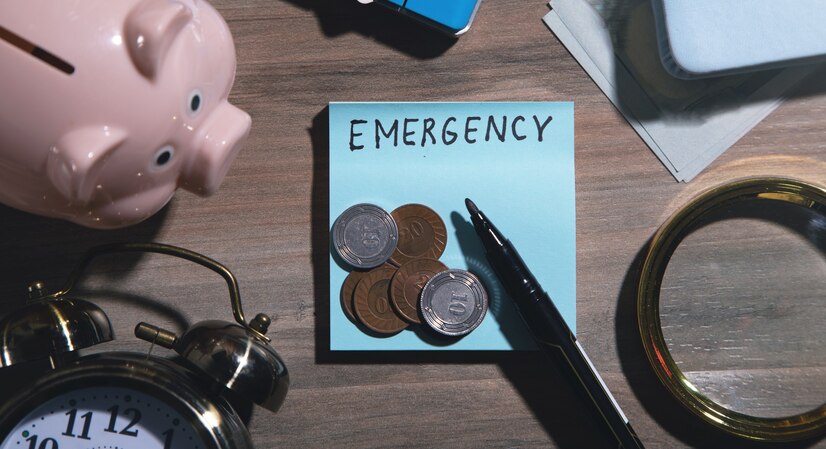The Easy Guide to Building an Emergency Fund
Having an emergency fund for those unexpected expenses can really save you in a pinch. Let’s talk about how to set one up.
Let’s start building your emergency fund!
Building an emergency fund is one of the smartest moves you can make for your financial security. Life can be unpredictable—whether it’s an unexpected medical bill, car issues, or losing a job.
Having a safety net in place can make all the difference. Here’s a simple, step-by-step guide to help you get started on building yours.

What is an Emergency Fund?
Simply put, an emergency fund is money you set aside for unexpected expenses that life throws at you—things like medical bills, car repairs, or even losing your job.
The goal is to have enough saved up so you don’t have to go into debt or scramble for cash when emergencies pop up.
Why is it Important to have one?
An emergency fund is your safety net. Without one, you might find yourself relying on credit cards or loans during tough times, which can lead to debt that’s hard to pay off.
Having an emergency fund means you can handle unexpected events without completely derailing your financial plans. It gives you peace of mind, knowing you’re covered in case of surprises.
Step-by-step guide to building an emergency fund
Step 1: Set a Clear Goal
This is the first thing you need to do. A good target is having 3 to 6 months’ worth of living expenses saved up. This covers essentials such as rent, utilities, food, and transportation.
To figure out how much you need, take a look at your monthly expenses and multiply that number by 3 or 6, depending on how much cushion you want. This will be a guide for you.
Step 2: Break the Goal into Smaller Milestones
Now that you’ve got your target number, let’s break it down into smaller, more manageable chunks. If your goal is $3,000, don’t stress about reaching it all at once.
Start with saving $250 a month, for example. This makes it feel more achievable and keeps you motivated.
Step 3: Open a Separate Savings Account
Now that you know how much you need to save, it’s time to open a separate savings account. Keeping your emergency fund in a different account from your regular checking or savings account makes it harder to dip into it for things that aren’t really emergencies.
Step 4: Automate Your Savings
Here’s the trick: make saving for your emergency fund automatic. Establish an automatic transfer from your checking account to your emergency savings account on each payday..
You can start with a small amount, like $50 or $100 a month, and gradually increase it as your financial situation improves.
Step 5: Cut Back on Non-Essential Expenses
If you’re finding it hard to save, take a look at where you can cut back on spending. Cancel subscriptions you’re not using, eat out less, or find cheaper options for things like your phone bill or grocery shopping. Every little bit of money you save can go straight into your emergency fund.
Step 6: Use Windfalls to Give Your Fund a Boost
Got a tax refund, work bonus, or unexpected gift? This is a great opportunity to give your emergency fund a nice boost. Instead of spending that extra cash, put it straight into your savings. It’ll help you reach your goal much faster.
Step 7: Track Your Progress
It’s really important to keep an eye on how much you’ve saved. Track your progress using a budgeting app, spreadsheet, or simply a notebook. Seeing your emergency fund grow can be a huge motivator!
Step 8: Don’t Touch It (Unless It’s a Real Emergency)
Once you’ve built up your emergency fund, remember that it’s there for true emergencies only. Resist the urge to dip into it for things like vacations, shopping sprees, or impulse purchases.
This money is for unexpected situations, like medical bills, car repairs, or job loss.
Conclusion
Building an emergency fund may seem like a big task, but you don’t need to do it all at once. So, why wait? Start building your emergency fund today!







